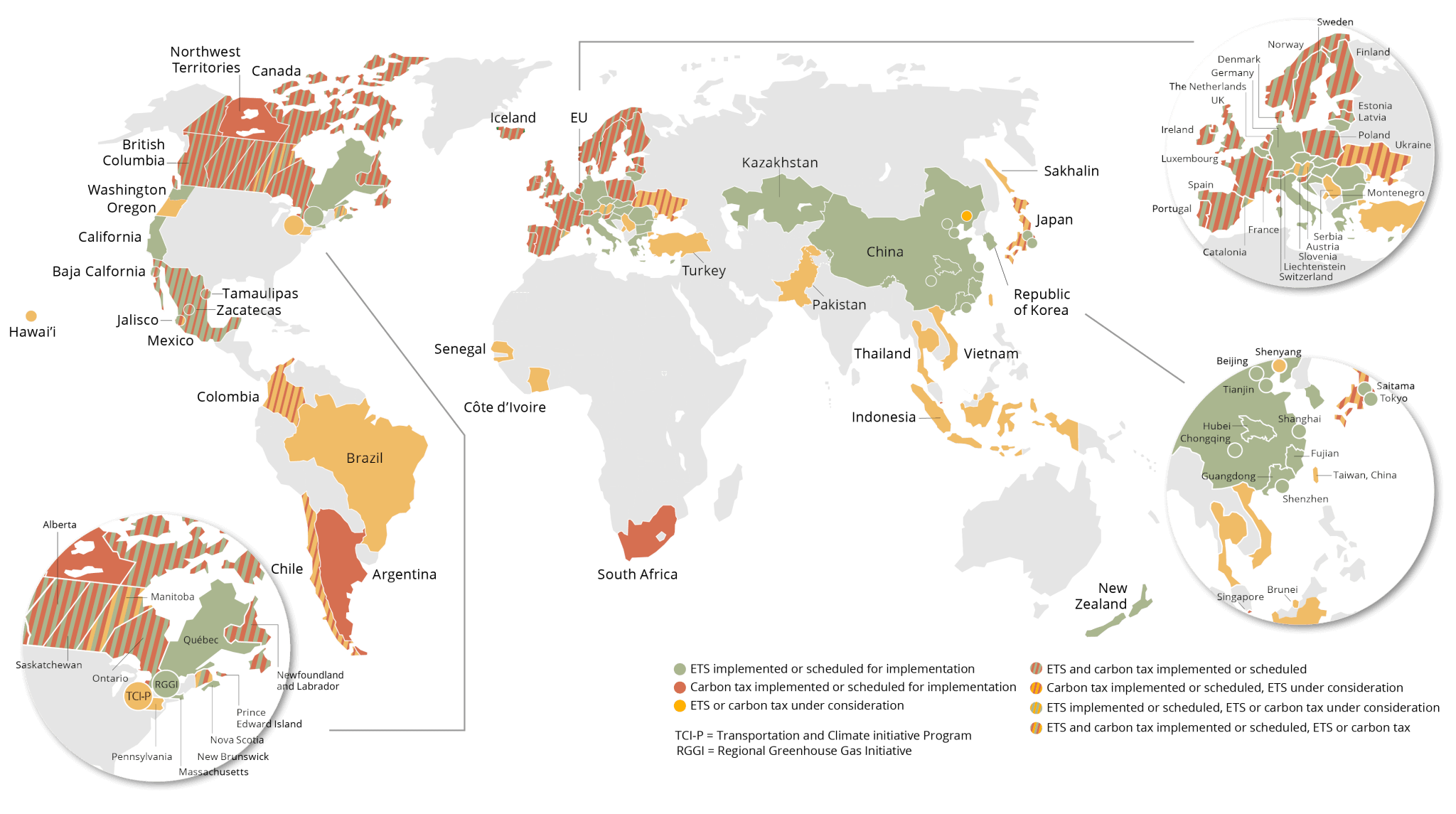Key Design Elements
In a cap-and-trade system, the government sets an emissions cap and issues a quantity of emission allowances consistent with that cap. Emitters must hold allowances for every ton of greenhouse gas they emit. Companies may buy and sell allowances, and this market establishes an emissions price. Companies that can reduce their emissions at a lower cost may sell any excess allowances for companies facing higher costs to buy.
Beyond these basics, policymakers must consider a range of design choices that can influence the cost of compliance and the distribution of these costs in society.
Complementary Policies – Will cap and trade be the primary policy tool for reducing emissions or will it stand alongside other policies (like renewable portfolio standards or vehicle efficiency standards) that also help achieve climate goals? Complementary policies will influence the carbon price and the pace of emissions reduction. Computer modeling and other analytical techniques can provide guidance to policymakers on the costs and results of different sets of climate action.
Scope – What emission sources and greenhouse gases will be covered by the cap? For example, RGGI covers CO2 from power plants while California covers several greenhouse gases from power plants, manufacturing facilities, transportation, and buildings. For administrative ease, programs tend to include only the largest sources of greenhouse gases in the economy.
Target – What level of emissions reduction will be required and by when? For example, the annual allowance budget in California will be calculated to put the state on a path to meeting its 2030 target to cut emissions to 48 percent below 1990 levels.
Allowance Allocation – How will allowances be distributed? Governments can auction allowances, give them away for free to covered facilities, or some combination of the two. It is common to allocate at least some allowances for free to prevent emissions “leakage” (the transfer of emissions-intensive activities like manufacturing to jurisdictions without a carbon price). Auctioning generates revenue that can be used for climate or other purposes.
Banking/Borrowing – Can facilities save excess allowances for use in a later year or “borrow” allowances from a future year? Both banking and borrowing help avoid price spikes. Banking also provides a financial incentive to keep reducing emissions beyond what’s required. Borrowing, however, can create supply constraints in future years. Most programs allow banking but not borrowing.
Compliance Periods – Must facilities surrender allowances every year or only every few years? Multi-year compliance periods can reduce price volatility. Most programs taking this approach require an annual “partial surrender” to cover some portion of that year’s emissions. RGGI and California both use three-year compliance periods with partial annual surrender obligations.
Offsets – Can companies use verified emissions reductions generated outside the cap to comply? Offsets can lower the overall costs of meeting the cap. For instance, agricultural and forestry projects can often reduce emissions at lower cost than industrial facilities. To be effective, offset projects must undergo rigorous verification procedures to ensure that emissions are actually reduced, and that only one entity takes credit for the offset.
Market Integrity – How will market manipulation be avoided? A transparent, secure registry can track transactions and prevent theft and double counting of allowances. In addition, most jurisdictions select independent experts to review transaction data and watch for fraud. Additional market oversight of some secondary carbon markets (the trading of allowances between individuals and/or firms) is provided by the Commodity Futures Trading Commission (CFTC).
Last Updated May 2024

